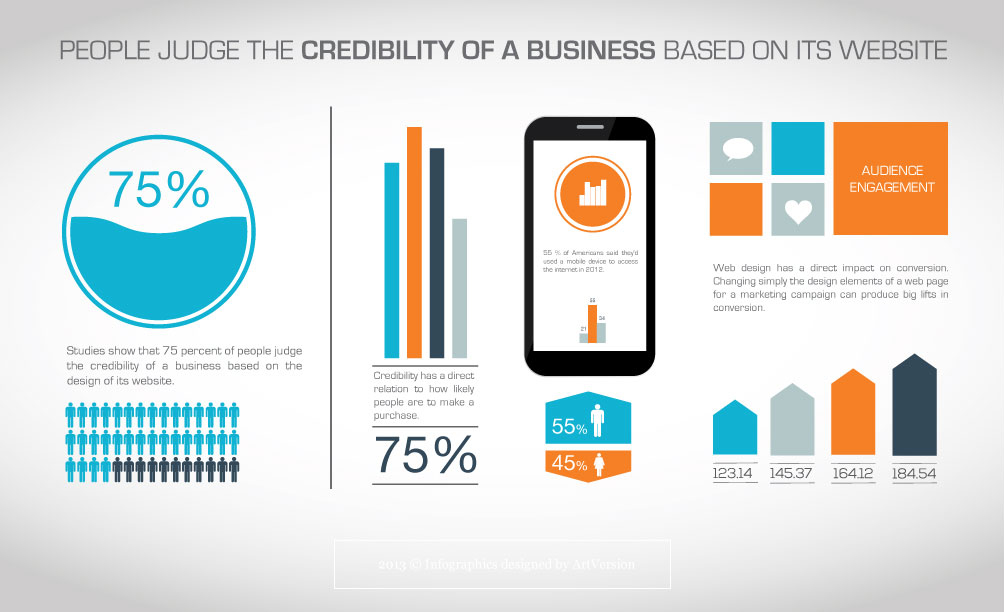Join Us As We Start A Journey Through Time, Exploring The Evolution Of Site Design And Just How It Has Actually Affected The Electronic Landscape
Join Us As We Start A Journey Through Time, Exploring The Evolution Of Site Design And Just How It Has Actually Affected The Electronic Landscape
Blog Article
Material Writer-Lamb Wren
In the past, websites were straightforward and concentrated on details. Navigating was straight, and style was for desktop computers. Currently, customer experience is essential. Data guides layouts for easy navigation. Receptive layouts fit various gadgets. Today, dark setting lowers pressure, and minimal menus improve navigation. Interactive functions engage individuals, and vibrant visuals stick out. AI assimilation improves engagement. See exactly how layout has developed to improve your on-line trip.
Early Days of Web Design
In the very early days of web design, simplicity reigned supreme. Sites were basic, with limited colors, font styles, and formats. The focus got on providing details rather than showy visuals. Customers accessed the internet with slow-moving dial-up connections, so rate and functionality were key.
Navigation menus were straightforward, typically situated on top or side of the page. Web sites were made for computer, as mobile browsing wasn't yet prevalent. Web content was king, and developers prioritized easy readability over complex style aspects.
HTML was the main coding language utilized, and designers had to work within its constraints. Animations and interactive features were marginal compared to today's standards. Web sites were static, with little vibrant web content or customized user experiences.
Surge of User-Focused Layout
With the evolution of website design, a shift in the direction of user-focused layout concepts has actually come to be increasingly famous. Today, developing sites that focus on user experience is vital for engaging visitors and achieving organization objectives. User-focused design entails recognizing the demands, preferences, and behaviors of your target audience to customize the internet site's format, content, and includes appropriately.
Designers now carry out extensive research, such as individual surveys and usability testing, to collect understandings and responses straight from users. This data-driven approach assists in producing user-friendly navigation, clear calls-to-action, and aesthetically enticing interfaces that resonate with site visitors. By placing the individual at the center of the layout procedure, web sites can deliver a more customized and enjoyable experience.
Responsive design has likewise emerged as a vital facet of user-focused layout, guaranteeing that web sites are maximized for various tools and display dimensions. This flexibility enhances ease of access and use, satisfying the varied means individuals interact with web sites today. In essence, the increase of user-focused style indicates a change in the direction of creating digital experiences that prioritize the needs and expectations of completion user.
Modern Trends in Website Design
Check out the current fads shaping web design today. One famous pattern is dark setting design, supplying a smooth and modern appearance while decreasing eye strain in low-light atmospheres. An additional essential pattern is minimalist navigation, streamlining menus and enhancing customer experience by focusing on essential elements. Integrating wp hosting plans -interactions, such as computer animated switches or scrolling impacts, can produce a much more appealing and interactive internet site. Responsive style continues to be crucial, making certain seamless user experiences across various tools. Furthermore, using bold typography and asymmetrical layouts can add visual passion and accentuate certain content.
Incorporating AI technology, like chatbots for consumer support or individualized recommendations, improves individual engagement and simplifies processes. Availability has also end up being a substantial trend, with developers focusing on inclusive layout methods to deal with diverse customer needs. Accepting sustainability by optimizing site performance for speed and efficiency is another arising fad in web design. Teaming up with customer feedback and data analytics to iterate and enhance style constantly is necessary for remaining pertinent in the ever-evolving electronic landscape. By accepting https://www.jumpfly.com/blog/8-foundational-seo-tips-for-a-better-2022/ -day trends, you can develop a visually attractive, user-friendly site that reverberates with your audience.
Verdict
As you reflect on the evolution of internet site style from the very early days to now, you can see just how user-focused design has actually come to be the driving force behind modern fads.
Accept the journey of adjustment and adaptation in web design, constantly maintaining the user experience at the forefront.
Keep current with the current patterns and innovations, and never ever stop evolving your method to produce visually stunning and user-friendly internet sites.
Progress, adjust, and develop - the future of website design is in your hands.
